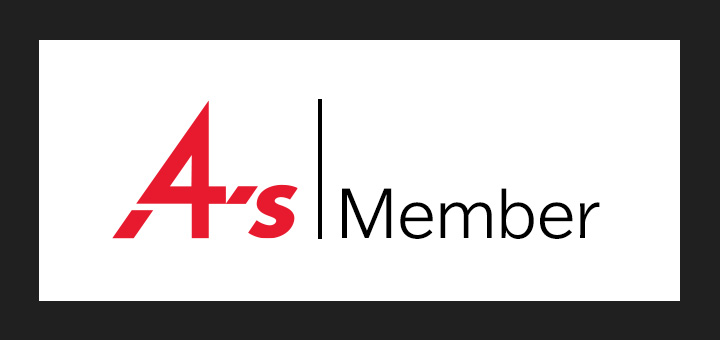Fast Company: 16 best practices to increase employee retention
In today’s marketplace, when it comes to attracting and retaining staff members who want to invest their time and services for the long term, trust and transparency are required every step of the way. In addition, it’s even more important to ensure that potential employees and employers are in alignment during the hiring process to begin with.
1. FOCUS ON CAREER MOBILITY AND GROWTH OPPORTUNITIES.
With the tight labor market, providing clear advancement pathways internally is crucial for retention. Create visibility into next-step roles, offer lateral moves to gain new skills, and actively reskill employees for new positions. Make mobility transparent through skills profiles, mentoring programs, and internal hiring goals. – Somnath Roy, Google Cloud
2. CREATE A CULTURE AND ENVIRONMENT WHERE PEOPLE WANT TO WORK.
Invest in leadership and career development across the organization, and maintain clear, consistent communication. Ensure employees are involved and given greater transparency, accountability, and opportunity and allow employees to benefit from company success. – Glo Gordon, MATRIXX Software
3. ADOPT A SYNCHRONOUS WAGE ADJUSTMENT MODEL.
I adopted a synchronous wage adjustment model in the hospitality industry for hourly workers, mirroring the annual review and raise process used for salaried employees in the corporate sector. Now, our kitchen staff receive raises collectively rather than individually. Since its implementation, requests for individual raises have ceased, and the team collaborates more productively. – Maurice Kelly, Windpact Inc.
4. FOCUS ON EMPLOYEES’ DIGITAL EXPERIENCES.
With enterprise work primarily in digital workplaces, it’s no wonder 36% of employees have considered quitting due to poor experiences with their tech stack—and 14% actually have. IT teams can become proactive by collecting and utilizing real-time quantitative and qualitative user experience data to ensure employees don’t face friction from frustrating IT. – David Keil, Lakeside Software
5. HAVE HIRING CONVERSATIONS THAT ALIGN EMPLOYEE AND EMPLOYER OBJECTIVES.
Have direct dialogue with prospective employees in the hiring process about whether they are seeking a job with an income level or a career with the opportunity for income and personal growth. Not judging job seekers compared to career seekers, but aligning employee and employer objectives better for each position may improve retention rates or at least set more realistic retention goals. – John DiSilvestro, Woodward, Inc.
6. INVEST IN EDUCATING YOUR PEOPLE.
People are hungry to learn. For example, the MasterClass subscription that we implemented for everyone at our agency is one new tangible perk that went over really well. People loved it! They organically formed book clubs to discuss classes and have put their education into action in their personal lives and at work. – Rob Davis, Novus Media
7. ONLY CONSIDER CANDIDATES LOOKING FOR A LONG-TERM HOME.
Assuming you have structure in place to foster a positive environment with clear paths to success and progress, employee retention begins during the hiring phase. You want to make sure you’re only considering candidates looking for a long-term home whose values align with the mission of the company. – Richard RB Botto, Stage 32
8. SHOWCASE THE MEANING OF YOUR WORK BY SHARING STORIES AND CASE STUDIES.
Show them the meaning, not just the money! Meaning in one’s work is often the single most important driver of employee engagement and success. Meaning can be direct, where values between employee and employer are aligned, or indirect, which is when the job provides important resources for outside needs. Either way, effective leaders showcase meaning by sharing stories and case studies. – Matthew Wride, DecisionWise
9. SHOW STAFF MEMBERS THAT THEY MATTER.
Being a “great place to work” means “having great people to work with.” Supporting your people’s needs, being flexible while driving business outcomes, allowing people to be their authentic selves, and making connections across your company all help increase retention rates. Taking action when there are issues, celebrating success, and even progressing toward bigger goals all show that everyone matters. – Chad Engelgau, Acxiom
10. BE CLEAR ABOUT WHAT YOU WANT AND FLEXIBLE WITH HOW YOUR EMPLOYEES DO IT.
Employees are tired of being told if they just do XYZ they will be rewarded. Similarly, if you make them feel they will be rewarded for going above and beyond, and if you don’t follow through, they will leave. Tell them exactly what you expect from them, and be flexible enough to let them do it how they think it can be done best. – Jason Hall, Five Channels
11. ISSUE REGULAR EMPLOYEE SATISFACTION SURVEYS.
To retain top talent, leaders should issue regular employee satisfaction surveys to keep a pulse on what’s working and what isn’t within their organizations. Leaders can then analyze the results of these surveys to determine what departments have the strongest retention and what factors correlate with high retention to ensure they are replicating those factors across the company. – Mark Anderson, Alteryx
12. RECOGNIZE AND CELEBRATE EMPLOYEES.
No approach is going to work if it lacks genuine caring and interest. Employees want to be recognized, but that means doing it in meaningful ways to them. It also means celebrating them in the ways they want. Finally, your team and each person want to be heard. Make time to connect and learn from team members about what they need and ask what they see can drive the business forward. This creates value. – Karl Giuseffi, Talent Plus Inc.
13. ENCOURAGE TEAM SUPPORT BETWEEN EMPLOYEES AND MANAGERS.
The adage that employees join companies and leave managers is true. To improve employee retention, focus on developing your managers and ensuring they have the time they need to lead others well. Daily, positive, supportive interactions between an employee and their direct manager is a critical component of retention. – Steve Dion, Dion Leadership
14. GIVE EMPLOYEES THE AUTONOMY TO DO THEIR JOBS FREELY AND RESPONSIBLY.
Leading successful teams comes down to trust. This is why we incorporate Netflix’s “‘Freedom and Responsibility” concept at G2, providing employees with guiding principles and visions and the independence to get results on their own. Encouraging open communication, establishing expectations, and giving teams the autonomy to do their jobs contribute to our culture, driving employee retention. – Godard Abel, G2
15. PLAN REMOTE WORK TEAM ENGAGEMENTS—AND IN PERSON—WHEN POSSIBLE.
As remote work proliferates, combating feelings of disconnection is key. Prioritize regular team engagements (in person when possible) and celebrate collective and individual wins, no matter how small. Recognizing achievements reinforces a sense of belonging, even if they’re in a different part of the country. – Miles Rote, Kevin Anderson & Associates
16. GIVE YOUR TEAM OWNERSHIP IN THE COMPANY AND SUPPORT THEIR PET PROJECTS.
Giving your team members ownership in the company if it sells is one way to increase retention. It’s something that makes them feel more committed and involved and allows them to benefit from acquisition along with you. Managers should also support their employees’ pet projects and side hustles—even financially, if possible. When my assistant was working on a children’s book, I gave her a bonus that I told her had to be put toward book illustrations. – Anna David, Legacy Launch Pad




